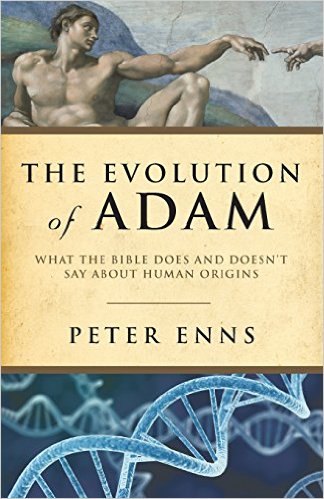Book Review: The Evolution of Adam
The Evolution of Adam:
What the Bible Does and Doesn't Say About Human Origins
by Peter Enns
Review by Vic Minish
Some individuals and groups have the idea that evolutionary biology and Christianity are at an impasse, and that one must choose between accepting the validity of scientific findings concerning human origins on one hand and belief in the good news of Jesus Christ on the other. Dr. Peter Enns, Abram S. Clemens professor of Biblical Studies at Eastern University, St. Davids, PA, sees no contradiction between the natural sciences understanding of human origins and the truth of Christianity. His position is that the modern biological evolutionary theory no longer allows for a strictly literal/historical reading of Genesis, but requires instead a metaphorical reading of the text. The interpretation of Genesis that Enns offers is not new or novel, but is situated within the context of the original audience, and ancient Israel’s understanding of their own self identity as God’s chosen people. While this hermeneutic does not create a problem for ancient Israel’s reading of their Scripture, it does appear to create problems for the writings of the Apostle Paul, and what has become the traditional understanding of the gospel. The goal of The Evolution of Adam: What the Bible Does and Doesn’t Say about Human Origins is to propose that the conflict under question is not between the sciences and the Bible, but between less informed and better informed ways of reading the Bible.
The book is divided into two parts. The first section deals largely with issues from Genesis, particularly the reasons why it was written, and the relationship of the identity of Adam to the identity of national Israel. Both Adam and Israel are viewed as specially chosen by God to be objects of divine favor, despite being exiled. This interpretive understanding alleviates any alleged conflict concerning biological origins and theological interpretation.
The second part of the book examines the Apostle Paul’s understanding of the relationship of Adam to Christ. Enns argues that when Paul appeals to the story of Adam to show the significance of Christ’s death and resurrection for all of humanity, Paul’s understanding of Adam is literal, yet this in itself does not determine the truthfulness of, or faithfulness to the gospel.
At root, much of Enns’ proposal is the working assumptions of the nineteenth century critical scholars following the Graf-Wellhausen of JEDP. This theory proposed that the first five books of the Bible were redacted, and were not the work of a single author as was commonly held. These scholars posited that the Pentateuch was assembled over a period of time from other now non-extant sources. Paul in his writings, according to Enns, is doing something similar to what the redactors did: he is using a story to explain a theological concept and provide a new identity for those who believe the gospel. Enns suggests that contemporary Christians may use Paul’s understanding for their own self identity even if the apostle was in some way mistaken about the material origin of humanity. The Graf-Wellhausen theory of the Pentateuch’s development was disputed during the nineteenth century as it is today by many scholars, as is Enns’ proposal today. However, what Enns does well is suggest that a new way of looking at both Adam and Paul may allow factions in the church to enter a deeper understanding of the gospel, rather than fighting between themselves.
Enns concludes with nine theses for a contemporary understanding of Adam. The most helpful of which is Thesis 3: “The Adam story in Genesis reflects its Ancient Near Eastern setting and should be read that way,” and Thesis 7: “A proper view of inspiration will embrace the fact that God speaks by means of cultural idiom of the authors.”
Not all readers will agree with Enns’ conclusions, but this book can nevertheless serve as a helpful resource in developing a fruitful conversation about the relationship between Scripture and scientific research.

